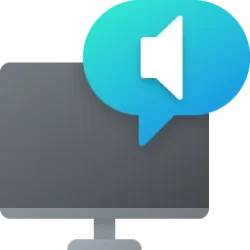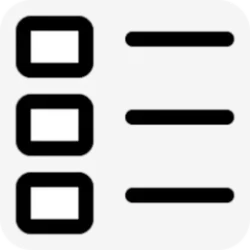Navigation
Install the app
How to install the app on iOS
Follow along with the video below to see how to install our site as a web app on your home screen.
Note: This feature may not be available in some browsers.
More options
Style variation
-
Disable Automatic Windows Updates in Windows 11
This tutorial will show you how to disable Windows Update from automatically downloading and installing updates in Windows 10 and Windows 11.- Brink
- Replies: 13
-
Use ViVeTool to Enable or Disable Hidden Features in Windows 11
This tutorial will show you how to use ViVeTool to enable or disable hidden features in Windows 10 and Windows 11.- Brink
- Replies: 49
-
Restore Classic File Explorer with Ribbon in Windows 11
This tutorial will show you how to restore the classic File Explorer with Ribbon for your account or all users in Windows 11.- Brink
- Replies: 403
-
Create Windows 11 Bootable USB Installation Media
This tutorial will show you how to create a bootable USB flash drive used to install Windows 11 with UEFI support.- Brink
- Replies: 128
-
Uninstall or Reinstall Copilot app
This tutorial will show you different ways to uninstall or reinstall the Copilot app for your account or all users in Windows 10 and Windows 11.- Brink
- Replies: 0
-
Add or Remove "Learn about this picture" Desktop icon
This tutorial will show you how to add or remove the "Learn about this picture" desktop icon when using Windows Spotlight as your desktop background for your account in Windows 11 and Windows 10.- Brink
- Replies: 27
-
Use SFC to Repair System Files in Windows 11
This tutorial will show you how to run the System File Checker (SFC) tool to repair missing, corrupted, and modified system files in Windows 10 and Windows 11.- Brink
- Replies: 25
-
Download Official Windows 11 ISO file from Microsoft
This tutorial will show you how to download an official Windows Server ISO or Windows 11 64-bit or ARM64 ISO file from Microsoft.- Brink
- Replies: 415
-
Repair Install Windows 11 with an In-place Upgrade
This tutorial will show you how to do a repair install of Windows 11 by performing an in-place upgrade without losing anything.- Brink
- Replies: 326
-
Clean Install Windows 11
This tutorial will show you step by step on how to clean install Windows 11 at boot on your PC with or without an Internet connection and setup with a local account or Microsoft account.- Brink
- Replies: 233
You are using an out of date browser. It may not display this or other websites correctly.
You should upgrade or use an alternative browser.
You should upgrade or use an alternative browser.
Tutorials
Windows 11 tutorials, tricks, tips, and guides.
This tutorial will show you how to add a custom Hidden items context menu to make it easy to hide/unhide selected files/folders and hide/show hidden items on demand in Windows 10 and Windows 11.
Hidden files, folders, and drives do not show by default in Windows.
Hidden files, folders, and drives are marked with the hidden attribute.
Protected operating system files are marked with the hidden and system attributes.
When you set to show hidden files, folders, and drives and protected operating system files, their icons will appear dimmed (faded) to indicate that they are hidden items.
While you must be signed in as an administrator to add or remove the Hidden items context menu, all users can use the context menu.
The Hide/Unhide...
This tutorial will show you how to add or remove the Send to context menu for all users in Windows 10 and Windows 11.
The Send to context menu allows you to quickly send a copy of items (ex: files, folders, libraries) to Bluetooth device, Compressed (zipped) folder, Desktop (create shortcut), Documents, Mail recipient, and removable and network drives.
To move an item instead of copy and item, you can right click or press and hold on a file or folder, click/tap on Show more options, click/tap on Send to, press and hold the Shift key, and click/tap on a drive or folder location in the Send to context menu.
You must be signed in as an administrator to add or remove the Send to context menu.
EXAMPLE: Send to context menu
It is...
This tutorial will show you how to enable or disable showing removable and network drives in the Send to context menu for your account or all users in Windows 10 and Windows 11.
The Send to context menu allows you to quickly send a copy of items (ex: files, folders, libraries) to Bluetooth device, Compressed (zipped) folder, Desktop (create shortcut), Documents, Mail recipient, and removable and network drives.
To move an item instead of copy and item, you can right click or press and hold on a file or folder, click/tap on Show more options, click/tap on Send to, press and hold the Shift key, and click/tap on a drive or folder location in the Send to context menu.
Option One: See No Drives using Extended Send to Context Menu...
This tutorial will show you how to change the default New folder name template to create new folders with a custom name by default for your account in Windows 10 and Windows 11.
A folder is a location where you can store your files. You can create any number of folders and even store folders inside other folders (subfolders).
When you create a new folder, it is named New folder by default.
If you get a Error 0x8000FFFF: Catastrophic failure when you create a new folder after changing the default "New folder" name template, then it means you used an invalid character (ex: " or * ) in the name, and will just need to change the name again without the invalid character.
Option One: Change New Folder Name
Option Two: Restore Default...
This tutorial will show you how to clear and reset the recent accent colors history to default for your account in Windows 10 and Windows 11.
You can personalize the color or accent color for window title bars and borders, the Start button, or the taskbar in Windows 11.
You can change the default Windows mode and app mode for colors to Dark, Light, or Custom.
The Dark mode has a darker set of colors that are designed to work well in a low-lit environment. This option is for the Start menu, taskbar, and notification center.
The Light mode setting has a lighter color scheme designed to work well during daylight hours. If you choose this option, you’ll be able to show an accent color for window title bars and borders. The Light mode...
This tutorial will show you how to rename any shortcuts you want on the Win+X Quick Link menu for your account in Windows 11.
The Win+X Quick Link menu (aka: Power User menu) is a pop-up menu from the Start button that includes shortcuts of common management, configuration, and other power user tools for Windows.
The shortcuts on the Win+X Quick Link menu are broken up into 3 groups. Group1 shortcuts in the bottom section, Group2 shortcuts in the middle section, and Group3 shortcuts in the top section.
Starting with Windows 11 build 22579, Windows Terminal and Windows Terminal (Admin) in the Win+X menu has been replaced by Windows PowerShell and Windows PowerShell (Admin). If you have Windows Terminal installed and would like Windows...
This tutorial will show you how to add or remove the User items from the Start Menu > All apps list for specific or all users in Windows 10 and Windows 11.
The Start menu is comprised of three sections: Pinned, All apps, and Recommended.
All apps appears when a user clicks on All apps in the upper-right corner of the Start menu :win:. All Apps is a comprehensive list of shortcuts, in alphabetical order, of all installed apps. Some of these shortcuts are grouped into folders with the expandable folder in the list.
The Start Menu > All apps list for an account will include items (ex: app shortcuts) from the following locations:
New Users - This profile includes items from the C:\Users\Default\AppData\Roaming\Microsoft\Windows\Start...
This tutorial will show you how to add or remove the All Users items from the Start Menu > All apps list for specific or all users in Windows 10 and Windows 11.
The Start menu is comprised of three sections: Pinned, All apps, and Recommended.
All apps appears when a user clicks on All apps in the upper-right corner of the Start menu :win:. All Apps is a comprehensive list of shortcuts, in alphabetical order, of all installed apps. Some of these shortcuts are grouped into folders with the expandable folder in the list.
The Start Menu > All apps list for an account will include items (ex: app shortcuts) from the following locations:
New Users - This profile includes items from the...
This tutorial will show you how to enable or disable pin and unpin items on jump lists for specific or all users in Windows 10 and Windows 11.
Jump Lists are available when you right click on an app on the taskbar or Start Menu that supports having a jump list.
Jump Lists are lists of app specific tasks or items you can quickly open or get to for every day usage. Jump Lists can include pinned items, recent items, frequent items, tasks, and/or websites.
Items pinned to an app's jump list will appear at the top of the jump list for quick access.
You can enable the Do not allow pinning items in Jump Lists policy to disable and remove Pin to this list and Unpin from this list context menus for Jump Lists.
You must be signed in as an...
This tutorial will show you how to change which taskbar to show taskbar apps on when using multiple displays for your account in Windows 11.
The taskbar in Windows 11 shows the Start menu, Search, Task View, Widgets, Chat, File Explorer, Microsoft Edge, and Microsoft Store buttons (icons) aligned to the center by default.
If you have more than one display connected to your PC, then you can show the taskbar on all displays instead of just on the main display.
The main taskbar is the taskbar with the clock and taskbar corner icons on it, and is on your main display. Taskbars that show on other displays not set as your main display do have the clock (if turned on), but do not have the taskbar corner icons on them.
When Show my taskbar...
This Show recent searches when I hover over the search icon setting no long works since 22621.1250, and has been removed since at least build 22623.1325.
The Search button on the taskbar allows you to quickly use Windows Search (Win+S) to search for apps, documents, email, files, folders, music, people, photos, settings, and videos on your device, and to search the web.
The Search button on the taskbar also allows you to quickly open your Top apps and Recent apps, and perform Quick searches to web search for today in history, new movies, translate, markets today.
When you hover over the search icon on the taskbar, you will see your recent searches by default.
Starting with Windows 11 build 22468, Microsoft added an option to turn...
Latest Tutorials
-
Site Usage Opt In or Out of New Insider Build Push Notifications from ElevenForum.com
- Started by Brink
- Replies: 0
-
Browsers and Mail Enable or Disable Export Passwords in Microsoft Edge on Windows 11
- Started by Brink
- Replies: 0
-
-
-
Accounts Enable or Disable Enhanced Anti-Spoofing for Windows Hello Facial Recognition in Windows 11
- Started by Brink
- Replies: 4
-
-
Apps Enable or Disable Move or Install Apps on Non-System Drives in Windows 11
- Started by Brink
- Replies: 0
-
Apps Enable or Disable Recommended Actions from Apps in Windows 11
- Started by Brink
- Replies: 0
-
-
Tutorial Tags
android
background
battery
bitlocker
bluetooth
boot
color
context menu
copilot
defender
desktop
display
drive
edge
file explorer
folder
fonts
hyper-v
icon
keyboard
libraries
location
mouse
notifications
onedrive
outlook
pen
pointer
power
printer
recall
screenshot
search
settings
share
shortcuts
sign-in
sound
start menu
store
taskbar
terminal
theme
touch
usb
voice
wi-fi
widgets
wsa
xbox




















